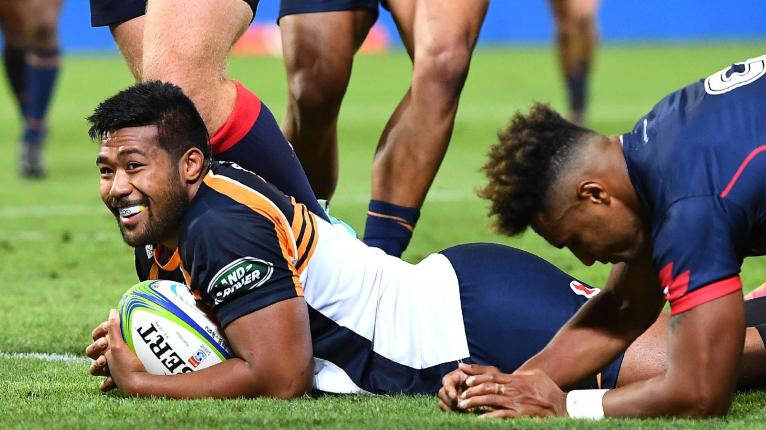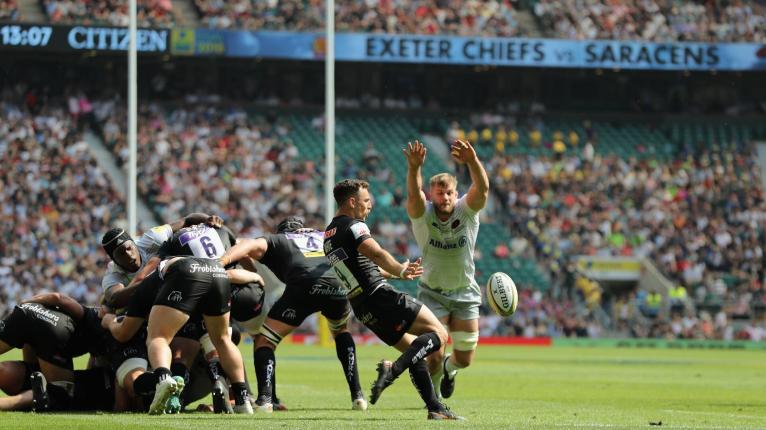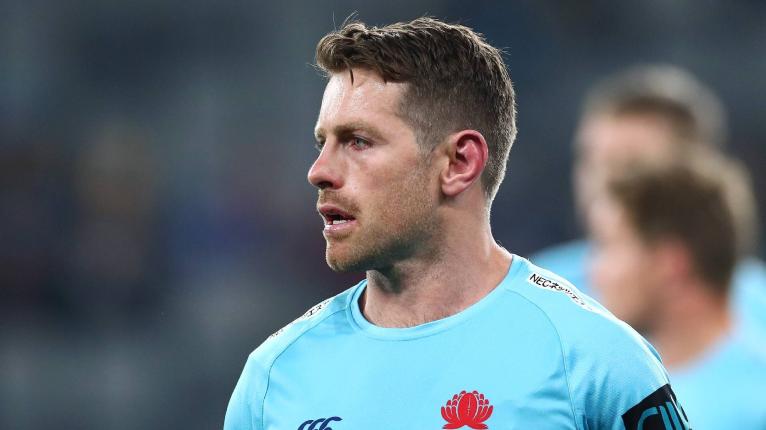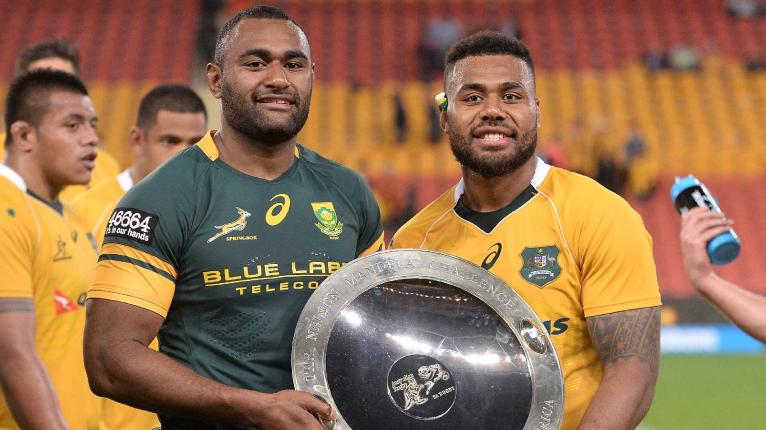Who makes and breaks the first Wallabies squad of the year?

With little time to rest, Australia will name their first Wallabies squad for the 2019 Rugby Championship this week.
33 players will be taken to South Africa to begin the campaign but more importantly, begin to prepare for the upcoming Rugby World Cup in Japan.
This will be the first squad selected by the new selection team consisting of head coach Michael Chieka, director of rugby Scott Johnson and selector Michael O’Connor.
They must get it right as the beleaguered Australian rugby community is starving for Wallaby success.
Neither back-rower David Pocock (calf), nor young gun Jordan Petaia (foot) are expected to be ready for the test and, therefore, haven’t been included in the following squads.
Added to this, back-rower Pete Samu (hamstring) is struggling to overcome his injury too.
James O’Connor could chosen but his eligibility is dependent on his rumoured to the Reds.
With all this in mind, two of RugbyPass‘ Australian-based writers, Nick Turnbull and Ned Stevens, run through who they believe will make the cut for the first Wallabies squad of the year to take on the Springboks in their Rugby Championship opener on July 21 in Johannesburg.
Props
NT: Allan Alaalatoa (30 tests), Sekope Kepu (101), Scott Sio (55), James Slipper (86), Taniela Tupou (10)
These names pretty much select themselves as they simply are the proven best five props in the country bringing a collective 282 caps of experience to the table. With respect to Tetera Faulkner, Jermaine Ainsley and Tom Robertson, who are also capped Wallabies, the sixth prop in line for me would be Waratah Harry Johnson-Holmes out of the Wanderers Club in Newcastle. He has demonstrated in Super Rugby 2019 that higher honours appear to be an opportunity that awaits sooner rather than later, with that sooner likely to be in 2020.

NS: Allan Alaalatoa (30), Sekope Kepu (101), Scott Sio (53), James Slipper (86), Taniela Tupou (10)
The part of the squad that picks itself, Australia’s front row stocks have gone from strength to strength and established themselves as some of the world’s premier options in this area. Sio and Alaalatoa were part of the powerhouse Brumbies pack, while Kepu is a 101-test veteran who knows every trick in the book. Tupou is his powerful self and despite a slow season with the Reds, he will continue to wreak havoc off the bench. The new face in the props is James Slipper, who has been capped 86 times for the Wallabies. A favourite under Cheika, a return to form this season on the Brumbies best has meant he will re-join the group and fresh for success this time around.
Hookers
NT: Folau Fainga’a (6), Damien Fitzpatrick (0), Alex Mafi (0)
I say no to Tolu Latu as his errant ways on and off the rugby park are simply too greater a deterrent, despite his obvious talent for the game. I have always enjoyed the physicality and scrummaging prowess of veteran rake Tatafu Polotu-Nau, yet waiting for him to perfect his lineout throwing to a requisite test standard of any acceptable consistency has been an exercise of endurance, with the finishing line nowhere in sight. For the Wallabies to cause the Pumas, Springboks and All Blacks any concern this year, the lineout has to function, and therefore I have gone with the premier Australian rake in Fainga’a, coupled with the unlikely Alex Mafi, who offers a stable set piece and a high work rate around the field, especially with his tenacity in defence. Damien Fitzpatrick is the best lineout thrower in the land and offers a relentless work ethic to accompany that skill.

NS: Folau Fainga’a (6), Tolu Latu (11), Tatafu Polota-Nau (87)
Folau Fainga’a’s irresistible form for the Brumbies in Super Rugby has further established himself as the premier hooker for Australia. Finding his replacement, however, has been far from easy. Brandon Panega-Amosa has been tried and discarded and Michael Cheika has been longing for Tolu Latu to finally come of age. Polota-Nau is now 33 years of age and is a safe option for the newly formed selection panel to take, knowing his limitations at lineout time and his strengths in tight. Alex Mafi was the dark horse after a robust Super campaign with the Reds, and his dependable all-round game means he will take part in the camps, but I’d be surprised if the selectors were willing to gamble on a new bench hooker so close to a World Cup.
Locks
NT: Rory Arnold (19), Matt Philip (3), Izack Rodda (15), Lukhan Salakaia-Loto (11)
There is no requirement for Adam Coleman to be selected for this squad. When fit, he is a devastating forward, however I think both he and the Wallabies would benefit from resting prior to the World Cup, allowing his Melbourne Rebels teammate Matt Philip to add to his three test caps. Philip is the uncompromising forward the Wallabies must embrace and not be tempted to continue with the selection of veteran Rob Simmons. Simmons should be commended for his service to Australian rugby, but I see greater value in Philip, considering the likes of Rodda and Arnold will also be available for selection. Philip’s aggression and ability to sniff out a try gives him a point of difference that sets him apart from other his peers.

NS: Rory Arnold (19), Izack Rodda (15), Lukhan Salakaia-Loto (11), Rob Simmons (92)
Izack Rodda’s uncompromising and physical nature almost makes him one of the first picked in the squad and provides the Wallabies with some much-needed work rate. Adam Coleman’s development stagnated massively over the last 18 months and is no longer in the top 4 locks in the country and misses out on the squad entirely. Rory Arnold’s defensive capabilities in the maul are one of many reasons he makes the cut, and Salakaia-Loto’s rangy nature and subtle skill has continued to improve. Rob Simmons will add to his test caps this season and move past the milestone 100 as the Wallabies back up lineout general behind Rodda.
Loose Forwards
NT: Jack Dempsey (8), Michael Hooper (91), Lachlan McCaffrey (0), Isa Naisarani (0), Pete Samu (7), Rob Valentini (0)
This is a vastly inexperienced back row selection with three uncapped players, yet they are three players who have earned their place due to Super Rugby form and that should be rewarded. I did consider Queenslander Scott Higginbotham, but I tend to think he has lost a little of his pace that was evident at Super Rugby level and would expose him at test Level. Similar to Adam Coleman, there is no requirement to select David Pocock for this squad. I think when fit, in the near future, Pete Samu has the game to fill in at openside flanker if required, however I expect Hooper to play every minute of every test in this Championship, with the intelligent and impressive Queenslander Liam Wright unlucky to miss out.

NS: Jack Dempsey (8), Michael Hooper (91), Lachlan McCaffrey (0), Pete Samu (7, Isa Naisarani/Luke Jones standby), Rob Valetini (0)
Australia can experiment in their first test squad without David Pocock, who is out with the calf injury that has plagued him all season. In particular they have the opportunity to change the balance of the back row, which has suffered due to the brilliance of Hooper and Pocock, who are both genuine openside flankers. Jack Dempsey has impressed with his limited time in the Wallaby gold and looks to be every bit a test footballer and should be expected to take part. Barring fitness, the Brumbies trio of McCaffrey, Valentini and Samu seem ready-made for the international rugby arena. Despite not being included in previous Wallaby camps, McCaffery’s form is simple too good to refuse. Michael Cheika has also previously expressed his desire to see Valentini at a higher level and this squad is an opportunity to do so. I expect either Naisarani or Jones from the Rebels to come in for Samu, should his injury be too severe to travel to South Africa.
Halfbacks
NT: Will Genia (100), Jake Gordon (1) Nic White (22)
Will Genia remains the premier half back in Australian rugby, yet I suggest the returning Nic White will keep him honest. White brings a better kicking game than Genia, but perhaps not Genia’s ability to read a game. Genia has a habit of popping up to snuff out an attack or to get a second touch in attack that makes him a venomous competitor. Both will serve Australia well. Whilst Joe Powell has had a Super Rugby season of some repute, I tend to think Jake Gordon has a better running game suited for test rugby given his larger frame and attraction to support play down the middle of the park. Similar to Rob Simmons, I think it’s time the Wallabies looked beyond Nick Phipps.

NS: Will Genia (100), Jake Gordon (1), Nic White (22)
Genia’s ability to provide fast, quality front foot ball has meant he remains the main halfback option for the upcoming World Cup. While his pace is down compared to his former self and his kicking game isn’t perfect, Genia has a composed temperament and can slow the game down when required while also holding the ability to speed it up too. The return of Nic White is a timely one as his sharp kicking game and goal-kicking means he is not only a bench option, but could be a genuine starter depending on the game situation. For me, Jake Gordon beats Phipps and Powell because of his electric running game and strong support play.
Fly Halves
NT: Quade Cooper (70), Christian Lealiifano (19)
I can’t find room for Bernard Foley in my squad and think the Wallabies would be well served by veterans Cooper and Lealiifano, with the latter my choice as starting 10. That is not to say Foley may not yet be selected for the World Cup, as we are all aware of his game, but this Championship is an opportunity for Christian and Quade to stake a claim.

NS: Bernard Foley (67), Christian Lealiifano (19), Matt Toomua (40)
Having been out of the international game for a while, Christian Lealiifano’s Brumbies campaign has busted the door down and demanded selection for the Wallabies’ Rugby Championship campaign. Not only does Lealiifano provide a solid passing game and outstanding goal-kicking, but genuine on-field leadership in a key position, something he has over his rivals Cooper and Foley. Foley’s game is reliable but his form in 2019 hasn’t been good enough off the back of his poor international season in 2018 and should be an option from the bench or in the reserves. Toomua provides dependable cover at 10, but his strongest position is 12 in which he can rekindle a possible relationship with Lealiifano having previously played together at the Brumbies.
Midfield
NT: Reece Hodge (33), Samu Kerevi (23), Tevita Kurindrani (58)
I think Kerevi has the 12 jumper already and Kurindrani the 13. Reece Hodge has proven to be the Mr. Fixit of Australia rugby in recent times, and I think he can cover both 12 and 13, if required. He also brings a more accurate long-range boot that may see him selected elsewhere. I did not consider Jordan Petaia for selection as he is still rehabilitating from a long-term foot injury. If Adam Ashley-Cooper is on the plane, he should be leading a supporter’s group.

NS: Adam Ashley-Cooper (116), Samu Kerevi (23), Tevita Kuridrani (58), James O’Connor (44)
With James O’Connor’s impending signing by Rugby Australia imminent, I expect him to be part of the Wallabies’ midfield combinations in 2019. His form at Sale in the centres has continually shown his international ability and it is exciting to see him back in the country. The rest of the midfield is most likely made up of Kerevi, Kuridrani and Ashley-Cooper. Kerevi has arguably been the best player in Super Rugby this season, and after a long-term injury layoff, Kuridrani is the same player who locked down the 13 jersey for the Wallabies before. Ashley-Cooper has been solid for the Waratahs, and his experience in two prior World Cups is paramount for the squad. Expect him to be a strong voice in the dressing room. More pressing is the exact make-up of the midfield and which combination of players provide the strongest platform and punch for the team.
Outside Backs
NT: Tom Banks (4), Kurtley Beale (82), Dane Haylett-Petty (29), Marika Koroibete (18), Jack Maddocks (6), James O’Connor (44), Henry Speight (19)
Speed, skill and some versatility in the wings. Both Maddocks and Haylett-Petty can also cover fullback, whilst also being able to compete as wingers in their own right. For me, Maddocks must start to impose himself on the opposition in his second season of test rugby and I think he will. Time for the ‘L’ plates to come off, and I actually think this kid has a future as a fly half, but right now his team needs him on the wing. My choice at fullback would be Tom Banks as he is going from strength to strength, with his fearless counter attack being something the Wallabies could take heed of. Banks is not a player of excessive caution and looks to open up the field, yet does so with consideration and not on a frivolous whim. If he had a jib, I would like the cut of it. I think if James O’Connor is ever going to make it back into the Wallabies, it will be as a 15. I wish the man well and redemption is a precursor to many-a-great sports story. I dare so say he still has the ability to turn a test, as does his ageing amigo Kurtley Beale, who should not be considered for the 12 jumper and is best at fullback. His 2018, like the Wallabies in general, was entirely forgettable.

NS: Tom Banks (4), Kurtley Beale (82), Dane Haylett-Petty (29), Marika Koroibete (18), Toni Pulu (0), Henry Speight (19)
The make up of the Wallabies back three will be extremely interesting and I think the selectors will tinker with it throughout the Rugby Championship campaign to find the ideal combination. There are too many wingers in the squad that don’t have the ability to kick the football and this limits the rest of the positions in the backfield. I can see Tom Banks grabbing the jersey if he gets the opportunity, and I’d love to see a backfield including Haylett-Petty and either Koroibete or Pulu, who has been excellent for the Brumbies. Such a blend has kicking ability, genuine speed, work rate off the ball and electric support play. Then imagine throwing Beale in the mix with 15 to go. Terrifying. Speight is rewarded for strong form, however Jordan Petaia will most likely replace him one he returns to full fitness.
In other news:













































































